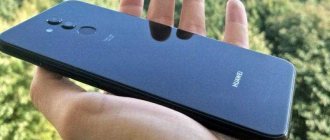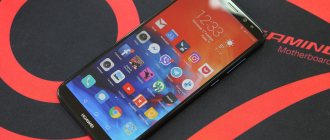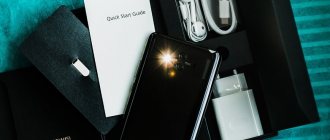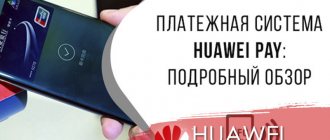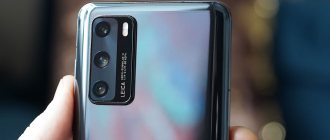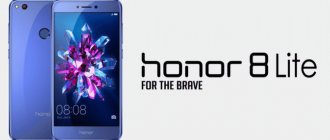Huawei Mate 8 is a stylish smartpad for the business segment. This is indicated by both the technical characteristics and design of this device, as well as the dimensions of its 6-inch screen. This gadget was presented to the general public at CES 2015. It replaced the previous iteration of smartphones. According to the Chinese developers, they did not plan to redesign the appearance of the device. This, rather, can be called a kind of work on bugs and updating the successful Huawei Mate 7.
What the 8th Mate model can please you with, this Huawei Mate 8 review will tell you about it.
Specifications
Before starting a detailed review of the Huawei Mate 8, let's briefly take a look at the technical characteristics of this device:
| Weight | 186 g; |
| Dimensions | 7.9×80.6×157.1 mm; |
| Battery capacity | 4000 mAh, non-removable type; |
| RAM capacity | 3 Gb; |
| Internal memory capacity | 32 Gb; |
| Screen | 6-inch, 368 ppi, 1080×1920; |
| Cameras | main - 16-megapixel (with autofocus and flash), front - 8-megapixel; |
| Sensors | fingerprint scanner, microscope, compass, barometer, proximity and light sensors; |
| Navigation | Glonass, GPS; |
| Wireless interfaces | NFC, bluetooth 4.2, Wi-Fi Direct and 802.11 ac/n/g/b/a; |
| SIM cards | 2 nano-SIM cards; |
| Connection | LTE 1, 3, 7, 20 || UMTS 2100/1900/900/850 MHz || GSM 1900/1800/900/850 MHz; |
| Supported memory cards | micro SDXC up to 128 Gb; |
| Graphics accelerator | Mali-T880 MP4; |
| Chipset | 8-core Huawei Kirin 950, 2.3 GHz; |
| OS | Android 6.0 + EMUI 4.0. |
Call and sound quality
Thanks to a wide range of supported frequencies, the smartphone demonstrates excellent signal reception quality. The voice is transmitted without distortion or interference. Of course, thick walls, uneven terrain and weather conditions can significantly degrade the quality of communication. But there are no complaints about the hardware responsible for communication.
The smartphone demonstrates good sound. Of course, this is not a music flagship. You should not expect volumetric or, conversely, “tube” sound from it with numerous adjustment possibilities. The built-in music player allows you to adjust basic parameters in the equalizer. For most users, the existing settings will be sufficient.
Equipment
Huawei Mate 8 is sold in a beautiful black cardboard box, the front of which is decorated with the model name printed in gold letters.
Everything in the box is stacked in layers. On top there is a special box for the Huawei Mate 8 itself. Below it there are 3 boxes with accessories. The smartpad is equipped with a bumper that can be used to protect the ends, a set of documents, a clip for removing the nano-SIM tray, a stereo headset, a power adapter with a current of up to 2 A, and a USB cable.
HuaweiMate 8 – Design
What you really always expect from the flagships of a Chinese manufacturer is a stunning appearance. The Huawei Ascend P8 and Huawei Mate S are crafted with the craftsmanship you'd normally expect from companies like Apple, with a mixture of glass, metal and other high-quality materials.
And the Mate 8 is completely upscale, somewhat reminiscent of the Nexus 6P's design. The edges of the smartphone are cut, reflecting light like a gemstone. And even though Apple used this same trick back in the iPhone 5, it still looks great.
Similar to the Mate S, the back cover is slightly curved. This allows you to hold the smartphone more comfortably in your hand compared to other competitors. And this is good, since the smartphone is really large. Considering this, it's surprising how light it feels. Despite its 185 grams, this weight seems to be evenly distributed throughout the smartphone.
But the durability causes criticism, because after just a few days of use, scratches begin to appear on the body, and very noticeable ones. On the other hand, the smartphone comes standard with a protective case included.
Design
A review of the Huawei Mate 8 smartphone is impossible without a detailed consideration of the device’s design. The device has a truly flagship design: 100% metal body, small-sized, for a 6-inch display. The case is only 7.9 millimeters thick, its matte surface created by sandblasting.
The flat sides of the smartphone have the texture of rolled metal. The edges are decorated with shiny chamfers. Strict headbands look very stylish and noble. The phone is available in brown, black and silver colors. The build quality of the case is almost perfect; it does not deform and does not produce any sounds during various manipulations.
The front of Huawei Mate 8 is covered with 2.5D high-strength protective glass. The display occupies 86% of the front part. The fields below and above are decorated with a subtle pattern in the form of funny circles, which can only be seen from a certain angle and only in extremely bright lighting. On the field below there is a manufacturer's logo, above which there are virtual control keys.
In the center above the smartphone display there is a speaker, to the right of which you can see the front camera lens, as well as light level sensors.
The back cover of Huawei Mate 8 is made of aluminum and is non-removable. It has perfectly fitted plastic inserts of the same color as the body of the device.
At the top center of the back panel you can see the main camera, housed in an aluminum disc with a shiny edge. On the left there is a dual LED flash, under which there is a fingerprint sensor with a shiny bevel.
The right side of the smartphone is equipped with a power button and a volume rocker.
The left side is equipped with a clamp-openable tray for 2 nano-SIM cards.
At the top end of Huawei Mate 8 there is a 3.5 mm audio output and a hole for a microphone.
In the central part of the bottom end there is a micro-USB port, on either side of which a pair of grilles are symmetrically located, under which there are microphones and an audio speaker.
There is also a standard decoration for Huawei smartphones - a pair of star screws.
⇡#Appearance and ergonomics
Huawei Mate 8 in hand
The design has not changed too much compared to the Mate 7 - the general outlines remain the same, all the changes affected the details. But it no longer occurs to compare the device with any HTC. Firstly, the Taiwanese company’s smartphones themselves have changed a lot, just take a look at the One M9+ or One A9. Secondly, the younger models of the Honor line (for example, 5X) have adopted many of the solutions - and now this style can already be called proprietary to Huawei, if, of course, you can discern some “family” features in it. Huawei smartphones are nice, but, subjectively, they still lack some kind of branded character.
Huawei Mate 8, front panel: above the display there is an earpiece, a front camera, a light sensor and a miniature status indicator
Huawei Mate 8, rear panel: at the top there is a camera module with a dual LED flash, below it is a fingerprint scanner; above and below we see plastic inserts above the antennas
The Mate 8 is no exception, although formally there is nothing to complain about here: the body is made of metal and tempered glass, the assembly is excellent, the colors are interesting (gold, silver, gray, chocolate) - but can you distinguish Huawei from other top smartphones at first glance? ? However, similar claims can now be made against many people, starting with Apple.
Huawei Mate 8, bottom edge: in addition to the microUSB port, the main speaker is located here
Huawei Mate 8, top edge: second microphone hole and 3.5 mm mini-jack
There are practically no frames around the display - due to this, we managed to save a lot of space and the Mate 8 turned out to be more compact than many smartphones with a smaller display diagonal.
Very thin Huawei Mate 8
It has also become even thinner than the Mate 7, with the camera protruding less from the body. Actually it turned out funny. Last time they announced a thickness of 7.9 millimeters, now we are told that they managed to reduce it by 0.4 mm - and it turned out... 7.9 millimeters. Amazing things are happening, almost on a Bulgakov scale. However, just as you couldn’t make any complaints about the Mate 7 - you’re too fat, so you can’t find fault with the Mate 8. It is rather too thin - holding it is not very comfortable because of this; but the ease of use of 6-inch smartphones is a completely separate topic that can be debated forever.
Huawei Mate 8, right side: standard set of volume rocker and power key located under it
Huawei Mate 8, left side: single slot for both nanoSIM cards and microSD card
Other differences from the Mate 7: the main speaker has moved to the bottom edge, which now does not overlap if the smartphone is lying on the back; reduced “swelling” of the rear panel; modified form of the camera module and fingerprint scanner; a single slot for two SIM cards and a memory card (previously there was one SIM card and two slots).
The fingerprint scanner is now round, not square, as on previous Huawei smartphones
We made it. Smartphone manufacturers are now competing to see who has a more accurate and faster fingerprint scanner – at least that’s what Huawei boasted at the device’s presentation in Las Vegas. And she boasted about it. The Mate 8 uses Android 6.0 with a scanner supported by default; you don’t even need to create your own software.
The scanner works very quickly and accurately, allowing you to unlock your device in the blink of an eye. It is noteworthy that it is suitable not only for unlocking: it is also possible to take photographs by touching the sensor, which is especially convenient when taking selfies. But you can’t scroll through photos in the gallery, like on the Mate S, for example. The scanner remains primarily a convenient way to protect a smartphone; its other uses are secondary.
Display
Mate 8 received a 6-inch IPS matrix with FullHD resolution (1080x1920). The pixel density level is 368 pixels per 1 inch. Compared to competitors' devices, in which this figure exceeds 500, Huawei Mate 8 looks rather weak, but it is not the numbers that should be assessed, but the quality of the screen itself. It is impossible to see any jagged or pixelated fonts here without a magnifying glass. This is not the most correct technique in terms of image, but in terms of ease of use everything is excellent.
The capacitive touch surface of Huawei Mate 8 is capable of recognizing 10 simultaneous touches. You can use the device with gloves, although without much convenience, but, in any case, you will be able to accept or reject a call.
The maximum screen brightness is 490 cd/m2, and the lowest brightness is 49 cd/m2. Due to the absence of a special air gap and the presence of a polarizing filter, the user can comfortably use the device even in bright light.
The lowest black field level is 0.33 cd/m2, which is quite good for an LCD screen. The contrast level is also at a decent level - 1310:1. The use of LCD, rather than the more modern AMOLED, has led to the fact that the contrast image quality is more pleasing than the huge resolution, but on a small screen.
The color situation on the Huawei Mate 8 screen is so-so. Gamma reaches a value of 2.11, which is not fatal against the standard of 2.2. But the average DeltaE deviation of 5.37 is not encouraging. This deviation is explained by the fact that the color gamut significantly exceeds sRGB standards.
The color temperature of the Huawei Mate 8 screen is 7500K, which is “colder” than the norm of 6500K. This is not critical, since in the settings you can easily switch color profiles, adjusting them to your liking.
Excellent viewing angles are made in the best traditions of IPS: even with a significant deviation from the perpendicular, color distortion does not occur, and the contrast drops slightly.
Huawei Mate 8 – Display
Most of the Mate 8's display features are among the best, except for one thing: resolution. This is not a 6-inch 4K display like the Sony Xperia Z5 Premium or a QHD display like the Samsung Galaxy S6. Here there is only 1080p, which was relevant in 2014. This may be a reduction in manufacturing costs, but we are dealing with a premium smartphone with a price tag of $625.
This is not to say that the screen is all that bad; the resolution is quite clear, it has decent viewing angles and good brightness. The main problem is related to color rendering, white color has a pinkish tint, black colors are quite deep and with this size it is well suited for watching YouTube.
Sound
Despite a pair of decorative grilles located on the lower end of the Huawei Mate 8, underneath there is only one speaker, the maximum volume of which is not amazing. The microphone coverage angle is 125°, which is extremely important for hands-free communication.
There is an option for DTS audio enhancement in the headphone settings. The sound quality in the headphones is good. The Music app can play FLAC files.
You can listen to the radio through an FM tuner, for the operation of which you must connect a wired headset that functions as a short-wave antenna. The presence of 3 microphones allows you to record high-quality sound using a voice recorder with a highly effective noise suppression system in the “Interview” and “Meeting” special modes.
Battery and autonomy
The gadget has a large reserve of autonomy. The battery, by tradition, is non-removable. In order to replace it, you will have to destroy the taped seam running along the entire diagonal of the screen. The battery is made of lithium polymer materials, its capacity is 4000 mAh. Considering the diagonal of the screen, it may seem that the battery reserve is not at all that outstanding. However, this is where the platform the phone is built on comes into play. Thanks to the 16nm process technology, power consumption was significantly reduced. Of course, a smartphone is not enough for two full working days. Rather, we can talk about a day with moderate use and 1.5 days with sparing use.
Important! The device is equipped with a “fast charging” option. The phone charges from 0 to 37% in half an hour.
Cameras
The main camera of the Huawei Mate 8 uses a 16-megapixel Sony IMX298 sensor, the maximum lens aperture of which is f/2.0. The LED dual photoflash is capable of illuminating the subject in continuous and pulsed modes.
With the vertical orientation of the Huawei Mate 8, on the main screen at the top you can see icons for setting up the flash, going to the menu for switching modes and changing cameras (main/front).
There are 5 links to special shooting modes in a line along the bottom edge:
- "Time period";
- "Video mode";
- "Photo mode";
- "Decoration";
- "Light".
Switching between these modes is carried out by horizontal movement across the surface of the screen. Below the line there are icons for calling up a menu of various special effects filters and going to the gallery, as well as a shutter key.
There are 9 items in the special shooting modes menu:
- "Text recognition";
- "Audio notes";
- "Slowdown";
- "Water marks";
- "Autofocus";
- HDR;
- Pre-mode;
- "Night Shot";
- Panoramic special mode.
Default mode involves a manual option for setting photographic parameters, which are displayed in the form of icons arranged in an arc. Using another similar scale, parameters are selected for making adjustments, which include: white balance, type of focusing, exposure compensation, shutter speed, ISO sensitivity level. If necessary, this scale can be easily collapsed by touching the arrow.
Using the video and photo shooting parameters in the main menu, you can only adjust the frame proportions and resolution. Other points are related to all sorts of auxiliary capabilities for autofocus, the use of on-screen and physical keys.
The Huawei Mate 8 camera can take excellent photos in auto mode in good lighting. You can also get good shots with night photography. In the most difficult conditions, for highly efficient shooting, it is best to use the free mode. In a special mode called “Light”, for high-quality shooting you should use special accessories - a tripod and a clamp.
The main camera is capable of shooting panoramas at high resolution and perfectly coordinates the exposure option for individual frames. But this program is not capable of removing all kinds of rapidly moving objects from the middle and foreground.
In the special “Focus” mode, you can take photographs in a special, original, special format. This is a stack consisting of several photos, which allows you to enable correction of the shooting distance and record images in separate files while working with captured photographic material.
The front camera is equipped with an 8-megapixel sensor and a lens with a strictly fixed photo focus without a flash. Its aperture is f/2.4. It does an excellent job of photographing self-portraits, producing high-quality, clear photographs with competent color rendition in daylight.
Battery
Long battery life.
You won't believe the slim profile, but Huawei has somehow managed to cram a 4,000mAh battery inside the Mate 8. The battery will easily last longer than a day. By the end of the day, the phone's charge level is usually in the range of 40% - 50%. And while the charging time of 156 minutes is not the fastest compared to flagships, we must keep in mind that the smartphone has a significantly larger battery than many of its contemporaries.
Memory and memory card
The smartphone is offered in two versions: with 4 GB of RAM and 64 GB of internal memory and with 3 GB of RAM and 32 GB of internal memory.
We are reviewing Huawei Mate 8 with 32 GB and 3 GB RAM. Of the 32 GB of internal memory, no more than 24 GB are available to the user. It should be recalled that the Mate 7 tested at one time had only 16 Gb. The memory of the Mate 8 can be increased by inserting a 128 GB micro SD/XC/HC memory card instead of the second SIM card (the previous model was limited to 64 GB). In addition, support for special USB-OTG technology makes it possible to connect a flash drive.
Introduction
The Huawei Mate 8 is launching without the Ascend , as a sign that it is designed to stand out from the series, and not just offer all the key advantages of the Ascend Mate7 and some new ones.
In any case, it is a direct successor, and it came to the market exactly a year later, freed from the shortcomings of its predecessor, including low graphics performance and a mediocre camera. Huawei has equipped it with a Kirin 950 processor, a new camera with autofocus and optical stabilization. And it still looks premium, has an all-metal body and a mid-budget price tag. Other than that, we're happy to note that the big battery is still in place and the fingerprint reader placement is now as good as ever. What else do you need for a 6-inch giant? Let's get a look.
Connection
Huawei Mate 8 works with a pair of nano-SIM cards in Dual stand-by mode: these two cards have only one transmitter. Thus, during activity on one SIM card, the second one is deactivated. The smartphone works with SIM cards according to the standard scheme; there are no special features here.
The Huawei Mate 8 smartphone supports NFC, bluetooth 4.2 LE, wi-fi standard 802.11ac in addition to standard n/g/b. There is support for LTE category 6, capable of transmitting data at speeds of more than 300 Mb/s. In our country, there are no problems with LTE; the list contains the necessary bands.
Mate 8 supports navigation systems such as BeiDou (PRC), Glonass, GPS-A, GPS. The phone functions perfectly in navigation mode - it instantly finds satellites. Mate 8 connects to 20 satellites with 6-meter accuracy in 15 seconds. In general, this 6-inch smartphone can be used by car owners as a navigator.
Main disadvantages:
– no 4K video recording (2160p);
– low-resolution display by flagship phablet standards;
– non-removable battery;
– the hybrid slot for a SIM card and memory card is not entirely convenient.
The result is a huge smartphone that has outgrown the Full-HD screen resolution precisely because of its size. If it were 5.5 inches diagonal, human eyes would not notice the difference between 1080p and 1440p, but at 6 inches it is already clear that the smartphone’s image is slightly stretched. Also disappointing is the lack of ultra-high-resolution video recording. An advanced processor can easily process it. So it turns out that the smartphone has grown, but has not matured technically.
Huawei Mate 8 has dimensions of 157.1 by 80.6 mm, and its thickness is 7.9 mm. In principle, for a 6-inch smartphone it looks very good. Its weight is only 185 g. But what’s more pleasing is the useful area of the space used: nothing superfluous. Not a millimeter.
Battery life and performance
This smartpad uses a non-removable battery with a capacity of 4000 mAh. Under extremely intense loads and 75% brightness, the device can last almost the entire day without recharging.
With moderate operation, the smartphone can work for approximately 30 hours, and when activating the energy-saving mode, even more than 2 days.
In addition, a fully charged battery of the smartphone in question allows you to:
Watch videos at maximum brightness for 10 hours;
Play graphically heavy video games (for example, WoT) - 5 hours;
Read e-books at 70% brightness - 14 hours.
The smartphone supports fast charging, which allows you to charge the battery by 70% in 30 minutes.
Together with Mate 8, the debut of the new 8-core HiSilicon Kirin 950 chipset, created according to the 16-nm process technology, by the Taiwanese company TSMC, took place. It has 4 powerful ARM Cortex-A72 cores with a frequency of 2.3 GHz and 4 Cortex-A53 cores with a frequency of 1.8 GHz.
High-quality processing of graphic data is provided by the ARM Mali-T880 MP4 accelerator with 4 execution units with a frequency of 900 MHz.
The Smart i5 coprocessor is responsible for the operation of the fingerprint scanner and other sensors. In addition to the latest ISP designed for image processing, the chipset integrates an LTE modem that supports Cat.6 and a dual-channel LPDDR4/LPDDR3 memory controller.
The performance of the Kirin 950 processor is 100% greater than that of the Kirin 925, which was used in the previous version of the smartphone, energy efficiency is 70%, and the graphics accelerator has become 126% more powerful. Despite this, the latest processor is noticeably inferior to the Qualcomm Snapdragon 820 and Samsung Exons 8890.
⇡#Autonomous work
The Mate 8 uses a capacious 15.2 Wh battery (4000 mAh, 3.8 V). Well, since Huawei claims that the Kirin 950 is a completely energy-efficient system-on-a-chip, such a battery, in theory, should provide more than a day of quiet operation even under heavy load. And the promise is fulfilled - the more powerful Mate 8 shows about the same results as the Mate 7 with the same battery. Huawei positions the Mate 8 as an ideal business smartphone, and at least in terms of operating time, it fully corresponds to its status.
In our traditional test with HD video playback at maximum brightness with Wi-Fi turned on and auto-update, the smartphone lasted almost 8 hours, which is simply excellent for a device with a six-inch screen. We add that Mate 8 supports fast charging, available in 9V/2A mode. Thanks to this, you can charge your smartphone battery by about 50 percent in about 45 minutes, which is enough for a working day; A full charge takes just under three hours.
Bottom line
Carrying out a detailed review of the Huawei Mate 8, we can say that it is a truly balanced modern smartphone, fully worthy of its flagship status. The powerful filling does not prevent this device from working autonomously for a long time.
Other advantages of this flagship include a compact and beautiful body, extremely narrow frames around the screen, an excellent camera with an optical stabilization system, and a fast-working fingerprint scanner.
The only drawback of the Huawei Mate 8 is its high cost of $800. The low screen resolution for a flagship smartphone and the lack of a separate slot for a memory card do not seem to be too big drawbacks.
Final words
Huawei Mate 8 is a very good 6-inch smartphone. One of the best you can choose from in the market today. But keep in mind that it is large even for a phablet. Add another inch, and you get a mini-tablet. On the other hand, now you don't have to buy a tablet. Definitely not necessary.
The gadget is very convenient to use even when used with one hand. This is largely due to the fingerprint sensor on the back of the phone. It removes the lock without having to reach for the unlock button on the right.
Externally, the phone is close to ideal, and if it had a QHD screen instead of Full HD, a metal ring for protecting the main camera instead of a plastic one, a camera itself with the ability to shoot in ultra-high resolution and three card slots, then it would be the best Android phone of the year. And so he is not without shortcomings. Even though it comes with Android6.0.1 out of the box, has a large lithium polymer battery and has an advanced processor. The company had to make some sacrifices to reduce production costs and not move the phone from mid-range to top-end.
Author: Stepan Mazur
Original photo: gsmarena
Camera specifications
The gadget is equipped with a camera module from Sony. The resolution is 16 megapixels. The front camera has a modest 8 megapixels today. But the main feature of the front camera is the ability to instantly focus on an object.
Unlike the color rendition of the screen, the camera provides the image with very natural, not “oversaturated” colors. Fans of customizing photo module settings will be pleased with the rich menu, balance, ISO sensitivity - there is room to expand here.
There is no 4K shooting, but is it really necessary for this smartphone, given its positioning?
Important! The only drawback of the camera can be considered to be the frankly weak night photography. In all other respects, there are no complaints about the speed of work and the quality of images.

